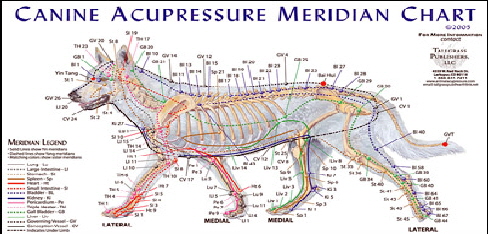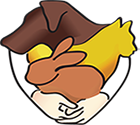What’s Acupuncture?

Acupuncture may be defined as the stimulation of a specific point on the body with a specific method, resulting in a therapeutic homeostatic effect. The specific point on the body is called “Shu-xu” or acupuncture point (acupoint). The ancient Chinese people discovered 361 acupoints in human beings and 173 acupoints in animals.
Modern research shows that acupoints are located in the areas where there is a high density of free nerve endings, mast cells, small arterioles and lymphatic vessels. Most acupoints are motor points. A great number of studies indicate that stimulation of acupoints induce release of beta-endorphin, serotonin, and other neurotransmitters. Therefore, acupuncture for pain relief is well supported by these scientific studies. As more studies are conducted, the mechanism of this ancient therapy will be better understood.
Vital Energy or Qi
The ancient Chinese discovered that the health of the body depends on the state of *Qi* (pronounced chee). *Qi* is the life force or vital energy. There are two opposite forms of *Qi*: Yin and Yang. Physiologically, *Qi*flows throughout the body 24 hours per day, maintaining a balance of Yin and Yang. When the flow of *Qi* is interrupted by any pathological factor (such as virus or bacteria), the balance of Yin and Yang will be lost and consequently a disease may occur.
Pain is interpreted as the blockage of *Qi* flow (or no free flow of *Qi*). Acupuncture stimulation resolves this blockage, freeing the flow of *Qi*and enabling the body to heal itself. Homeostasis is restored when Yin and Yang *Qi* are in balance.
What’s the History of Acupuncture?
Acupuncture has been practiced in both animals and human beings for thousands of years in China. The earliest veterinary acupuncture book “*Bo Le Zhen Jing*” (*Bole’s Canon of Veterinary Acupuncture*) is believed to have been written by Dr. Bo Le in *Qin-mu-gong* period (659 B.C. to 621 B.C.). Veterinary treatment protocols using acupuncture were well documented in this textbook. Since then, acupuncture was and is still a part of the mainstream veterinary medical system in China.
What are Acupuncture methods and goals?
Acupoints may be stimulated in a variety of ways. These techniques include dry needling, moxibustion, aq-acupuncture and electro-stimulation. Whatever tools are used, the goal is always the same: to restore the flow of *Qi* and allow homeostasis to return.
How safe is acupuncture therapy?
Acupuncture is a very safe medical procedure when administered by a qualified practitioner. Very few side effects have been found in clinical cases.
How long does each treatment last?
Each session may take 20 to 60 minutes.
How many treatments are needed?
It depends upon the nature, severity and duration of diseases. A single treatment may be enough for an acute condition. A series of 3 to 10 treatments can resolve many chronic problems. Some degenerative conditions may need monthly treatments over time.
Does acupuncture hurt?
A proper acupuncture therapy may induce distention, and a heaviness sensation along with contraction of local muscle. Over 95% of patients are comfortable with acupuncture therapy. Some animals will fall asleep during acupuncture treatment. Sedation is not recommended before acupuncture treatment as it may interfere with the acupuncture effect.
How much does a veterinary acupuncture treatment cost?
It depends on location, practitioner, species, and disease. A typical range of fees for a single session of acupuncture will vary from $40-$200.
Who is qualified to perform veterinary acupuncture?
Only licensed veterinarians are eligible to practice acupuncture in most states in the USA. A certified acupuncture training course is highly recommended before performing veterinary acupuncture.
Where can I find a Certified Veterinary Acupuncturist (CVA)
A qualified veterinary acupuncturist near you can be found at the website: www.tcvm.com.
What physiological effects are induced by Acupuncture?
Numerous studies show that acupuncture stimulation induces these physiological effects:
- Pain relief
- Regulation of gastrointestinal motility
- Anti-inflammatory effect
- Immuno-regulation
- Hormone and reproductive regulation
- Anti-febrile effect; microcirculation promotion
When is Acupuncture Indicated?
Clinical trials indicate that the acupuncture therapy can be effective in the following conditions:
- Musculoskeletal problems: muscle soreness, back pain, disc problems, osteoarthritis, degenerative joint disease.
- Neurological disorders: seizure, laryngeal hemiplegia, facial and radial nerve paralysis.
- Gastrointestinal disorders: diarrhea, gastric ulcers, colic, vomiting, constipation and impaction.
- Other chronic conditions: anhidrosis, heaves, asthma, cough, uveitis, behavioral problems, Cushing’s disease, hyperthyroidism, infertility, hypothyroidism, renal failure, geriatric weakness, skin problems.
- Performance enhancement and prevention of disease.
Cautions and Contraindications
When acupuncture is performed, the following conditions are cautioned or contraindicated:
- Fracture
- Pregnancy
- Open wound
- Infectious diseases
Why is Acupuncture frequently combined with herbs?
Sometimes the application of Chinese Herbal Medicine is chosen by the knowledgeable veterinarian as a support for the acupuncture, or on occasion, in lieu of it. Herbs are frequently used in situations that have not responded to traditional western veterinary medical practices.
